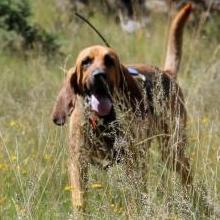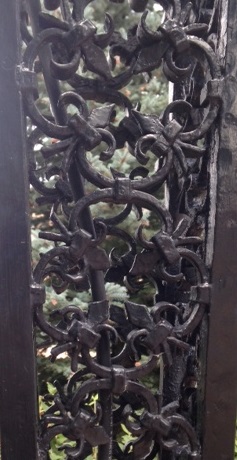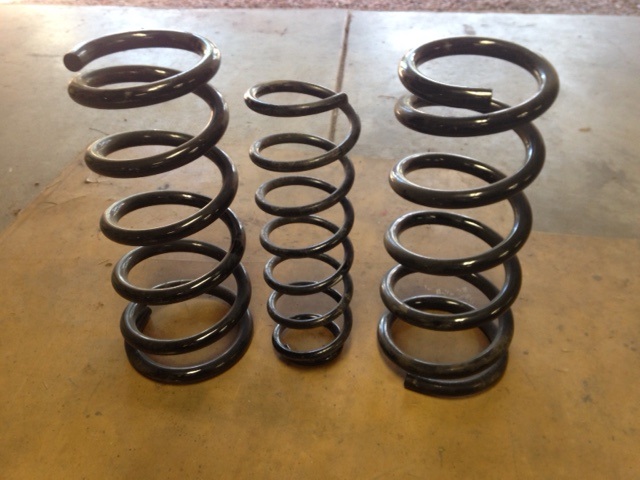-
Posts
61 -
Joined
-
Last visited
Content Type
Profiles
Forums
Articles
Gallery
Downloads
Events
Posts posted by Mtnstream
-
-
Excellent, been thinking of this same type of thing myself. I like your design...looks like it will do just what I need.
-
On 5/22/2017 at 9:08 PM, Melw45 said:
Hum Lets see extra large quench tank to act as cooling for the motor. Make a pulley to use in place of the prop.
Use that to drive a over head line shaft to drive the 2x72 grinder.
Or maybe i just use the electric motor.

Mel
I think you could put the boat motor in a tank to run a hydroelectric generator that would run the electric motor for the 2X72. Just need to fugure out how to power the boat motor so you can have a perpetual motion machine....maybe somehow hooked to your forge and change the boat motor to steam...yea, that's it, that will work!
-
22 hours ago, ThomasPowers said:
Will you be making a flipover lid for it to help discourage blade suicides? I've really like the "step on a pedal to open the lid trash cans for quench tubs; but it's hard to find the metal ones anymore.
Ha, I agree...put a top on the slack tub. Was working a small vegetable chopper (from a file) and it hopped off my anvil right into the tub. I heard it crack, couldn’t have made that chip shot if I tried. The cracked chopper is now in my overflowing "lessons learned" bucket
-
Hi James...I got in to blacksmithing in much the same way you are. If I had it to do again I would start out making tools you can use. My steps, I am sure the more experienced would do it differently but here goes. First, since you have the forge and anvil, buy a good heavy duty set of tongs. I made some first off and burned my arm because I didn't have the skill or knowledge to make them properly. That hot steel will bounce around a lot as you learn to hit it square. It's worth the 40 bucks to get a good pair of tongs to hold that hot steel tight. Second, get an old coil spring, cut 8 inches off, heat it up and straighten. It's amazing what you can learn and how good it feels just to straighten that first piece. Make a number of punches, chisels, cutters etc. You will learn the basics and have a great time straightening, making round and square tapers, figuring out the heats etc. Best of all you will use them as you progress. Tongs, knives, etc. etc. all build on the basics you will learn. Good luck and enjoy!
-
I made a couple of carpentry marking knives and find I use them for marking mild steel more than wood. They scribe a thin and precise line in the metal. I also use my professional grade tempering oven (toaster oven) to cook mini pizzas.
-
Great looking handles. Twists and "cubes" look even and perfect....very nice.
-
Specialty punches and slitting chisels.Swage block (if you can get one cheap). Any and all hardie tools. Any books, plans, design templates. Good strong tongs... you can never have too many. Big truck....because I would fill it up!
-
Very Nice, great detail on the cross piece wraps!
-
I had the chance to examine one of these that was in very good shape at an auction one time. It was of unknown origin and vintage but I was suprised at the strength and flexibility of the steel shaft. It appeared to me to be some kind of spring steel as well. Very tough but with some give.
-
There drew he forth the brand Excalibur,
And o’er him, drawing it, the winter moon,
Brightening the skirts of a long cloud, ran forth
And sparkled keen with frost against the hilt:
For all the haft twinkled with diamond sparks,
and struck down thy zombie.
I guess that seals it...Excalibur is outlawed in England. Someone better tell Arthur....
-
For what it's worth....I like them, they look good. I would take a flatter to the "A" cross bar joints so they match the smoother finish of the other letters and maybe sharpen the "L" corner a little (upset?). Depends how much time you want to invest in them. All in all I think the rebar gives a suprisingly nice look to the letters. Very cool!
-
Everything in your shop takes a chain hoist to move........
You have as much fun making tools as using them.......
Your wife wants to buy something and you answer is "I can make that....better"
-
Very cool, multiple skills displayed in that single frame
-
I recently spent some time at the Broadmoor Hotel in Colorado Springs and was pleasantly surprised to find numerous excellent examples of blacksmithing done in the last century. The Hotel was built in 1918 and much of the iron work dates from that time. From gates to lights and huge fireplaces it was fun to look at. Anyone have other examples form around the country?
-
I like invention and thinking outside the box...but, these guys are just plain crazy. Any wood splitting machine where your hand(s) are a necessary part of the mechanism is an accident waiting to happen.
-
Do make your own tongs and tools
Don't despair when hard, long work goes into a failure
Do push the limits every day in the shop
Do push the outside world out of your shop with every hammer blow
Do be proud of what you make with your hard work and two hands
Don't be limited by conventional "wisdom"
On 8/1/2016 at 9:55 AM, rockstar.esq said:Don't name your business "Forge" unless you're a counterfeiter or a maker of blacksmith forges.
Draw out stock with either the edge or the horn of your anvil.
Flatter peins leave less texture to clean up
Def: forge
noun
-
1.a blacksmith's workshop; a smithy.
-
-
On 7/19/2016 at 2:54 PM, pdesorm said:
Hello there,
I am helping the local Colby Curtis museum and Stanstead Historical Society identify and label some blacksmith items. I do mostly small forge projects for fun so my worldly knowledge is limited.
Any idea what these tongs would have been used for? I've also got a similar set at home.
Thanks.
They look like some sort of crucible holder to me. Flip them over, prongs go in slot in crucible, angle piece forms a shelf for the bottom for the crucible. OR...some sort of dentistry torture device...or maybe both!
-
-
-
Can't take credit for building this stand....got the vise and stand as one unit at an auction for $60. The base is a railroad wheel. The whole thing weighs in at about 250 pounds. Vise is an "Indian Chief" with 5 1/2 inch jaws. Height of jaws is just over 45 inches. Wasn't sure about it when I purchased it but it has really suprised me and I use it more than my more traditionally mounted post vise.

-
well done, it's been fun to watch your progress toward the finished product.
-
-
You know where the "best" scrap yards in town are and they call you by name when you show up.
-
Very nice! Did it go back into the forge for the "patina" or is there some other way you put the finish on it?




How to make a perfect forge weld, every time.
in Blacksmithing, General Discussion
Posted
Having never seen a perfect forge weld I can't say how to make one. I'm going to try the full moon at Equinox though.... "Don't attempt perfection, it's a moving target" unknown artist